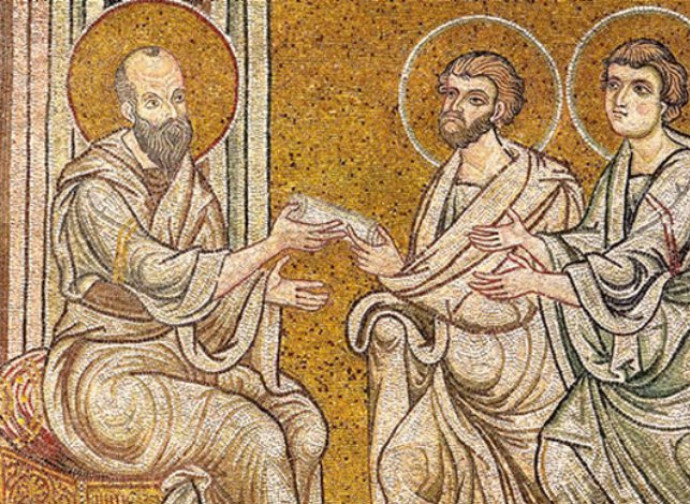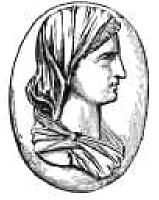Following the death of Marcion of Sinope in 154 C.E., many Marcionite Christians appear to have expanded the Marcionite canon to include the Pastoral Epistles.
Evidence for this is found in the existence of Marcionite-style Latin prologues to the Pastoral Epistles, particularly in the prologue to Titus:
“He warns and instructs Titus concerning the constitution of the presbytery and concerning spiritual conversation and heretics to be avoided who believe in the Jewish fables.”
This language closely resembles that of Apelles, a disciple of Marcion, who referred to the Hebrew Bible as full of “fables” and “failed prophecies”. It is possible that Apelles was responsible for the prologues to the Pastoral Epistles, having collected and transcribed these letters after Marcion’s death—similar to how Marcion himself authored the prologues to the epistles he compiled.
Tertullian remarked that he was astonished the Pastoral Epistles were absent from Marcion’s Apostolicon, possibly because he recognized similarities between their content and the other Pauline letters. The presence of Marcionite features in the prologues to both the recognized letters and the Pastoral Epistles suggests that the practice of collecting and prefacing Pauline letters continued within the Marcionite community after Marcion’s passing.
Additional evidence comes from Ephrem the Syrian, who references Marcionite Christians using 1 Timothy—notably, the only epistle that directly quotes the Evangelicon. Similarly, John Chrysostom, in his homilies against Marcionite Christians, refers to their use of 2 Timothy, indicating that the Marcionite canon continued to evolve in the centuries following Marcion’s death.
Did Marcion Reject the Pastoral Epistles?
The absence of the Pastoral Epistles from Marcion’s original Apostolicon does not necessarily mean he rejected them. He may simply have been unaware of their existence.
As personal letters rather than epistles addressed to entire churches, the Pastoral Epistles may not have been as widely circulated, making them more difficult to compile. Additionally, since these letters were among Paul’s last writings, they would have had a shorter period of circulation before Marcion began assembling his collection during his travels.
Inclusion in the Testamentum
Like the Epistle to the Alexandrians (Hebrews), the Pastoral Epistles are now included in the Testamentum as part of the Antilegicon—a category encompassing all writings attributed to the Apostle Paul whose authenticity or value has been disputed.
The name Antilegicon derives from the Greek term antilegomena (“things spoken against”) fused with the book-title ending -ikon, whose κ (kappa) shifts to c in Latin, yielding -icon and thus signifying “the book of disputed writings.”
The Marcionite Church considers these texts deuterocanonical, believing that Apelles of Alexandria, a disciple of Marcion, collected and transcribed them after Marcion’s death. While they are not on equal footing with the Evangelicon and Apostolicon, they remain valuable for theological and historical study and may occasionally be used for liturgical purposes.
Should definitive evidence emerge proving these texts to be authentic works of the Apostle Paul, and should their original, non-interpolated versions be recovered or reconstructed, the Marcionite Church would consider their inclusion in the Apostolicon proper.
Reconstruction of the Pastoral Epistles
The versions of these epistles included in the Antilegicon are shorter than their mainstream counterparts. The Marcionite Church has reconstructed them primarily using citations, allusions, and attestations from Clement of Alexandria, an early Christian theologian (ca. 200 C.E.). Additional references were drawn from other patristic sources up to the First Council of Nicaea (325 C.E.), particularly in the form of biblical catenae (exegetical chains).
Exceptions to this methodology were made only in cases where:
- A verse was alluded to in the Marcionite Prologues of the epistles.
- A verse was deemed absolutely necessary for textual continuity.
As with other Pauline letters, the Pastoral Epistles were later expanded and edited by proto-Catholic Christians to align with emerging church doctrine. Anti-Marcionite interpolations were especially prevalent in these texts.
The reconstruction of the Pastoral Epistles is based primarily on:
Philip Schaff, Ante-Nicene Fathers (1885)
Maegan C.M. Gilliland, The Text of the Pauline Epistles and Hebrews in Clement of Alexandria (2016)
You can read the First Epistle of Paul to Timothy here, the Second Epistle of Paul to Timothy here, and finally, the Epistle of Paul to Titus here.



